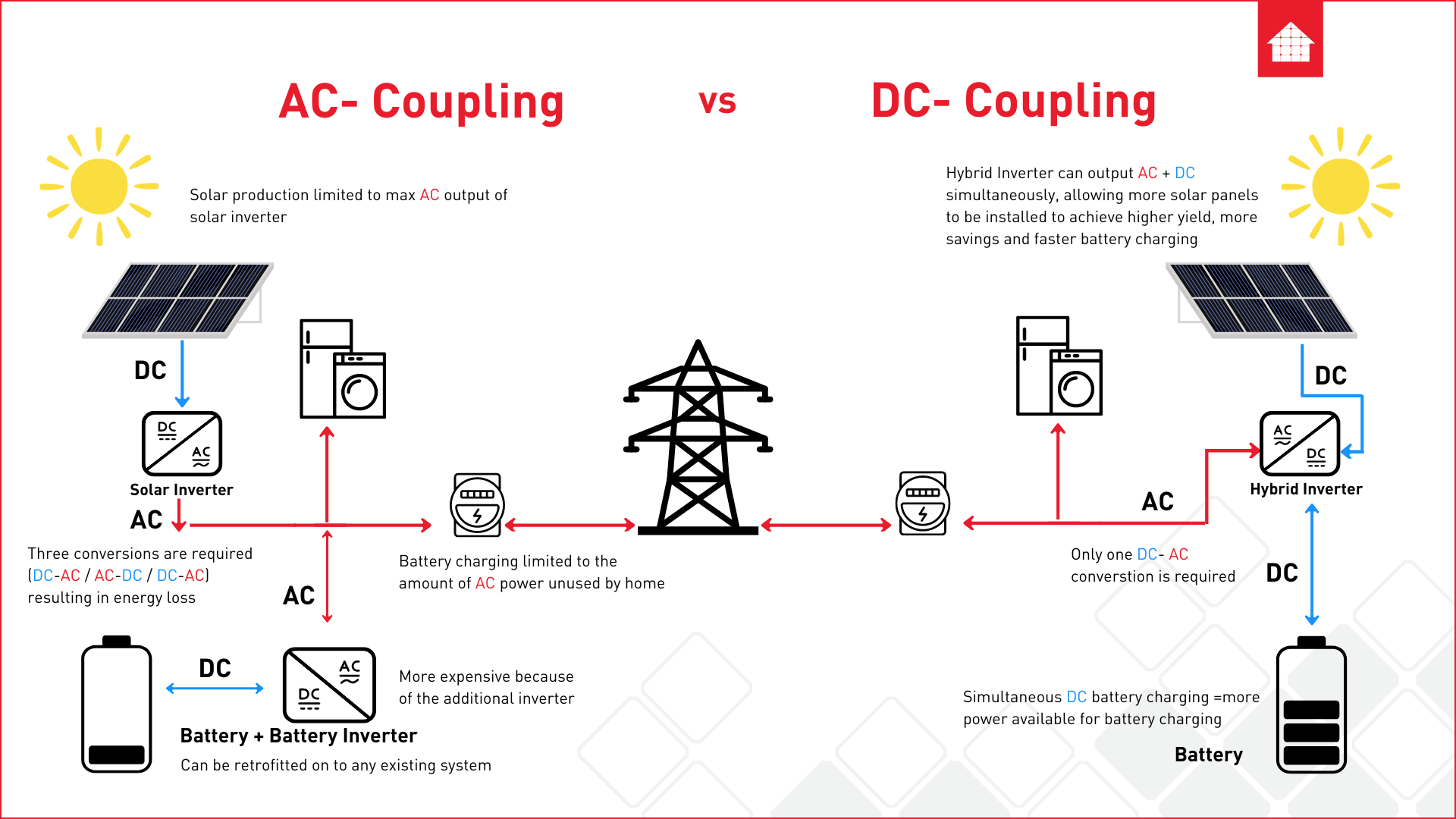Can you install a single-phase solar system on a three phase installation?
Yes, the energy generated by the solar system reduces the energy consumed on the phase it’s connected to. If the solar system supplies the energy consumed on this phase and exports energy, this negative value of energy is subtracted from the energy consumed on the other 2 phases. This is net metering where the total amount you pay the electricity retailer for energy is the sum of the energy consumed across the 3 phases minus the energy generated from the solar. So, when you have net metering you do not need to install a three-phase solar system on a three-phase installation to reduce your electricity bill.
Can you install a single-phase (AC Coupled) battery on a three-phase installation?
Yes, when you have net metering the battery works in a similar way to a single-phase solar system installed on a 3-phase installation. In that, the sum of the energy imported across the 3 phases is what’s billed by the electricity retailer.
The battery has 3 CT’s, one installed on each of the 3 phases to measure the sum of the power being exported to the grid. It uses this information to regulate the charging of the battery at the same rate as the energy being exported, resulting in zero energy being exported to the grid. All excess solar energy is therefore used to charge the battery.
This means you can have a battery on any phase and the solar on any phase. It also means you can install a battery independent of the solar system in this configuration.
What is net metering?
Net metering calculates the sum of all imported and exported energy (kWh) across the 3 phases. For example, if 10kWh of energy was imported from the grid for 2 of the 3 phases and 5kWh was exported to the grid on the third phase, due to excess solar generation, the net energy metered would be:
10kWh (red phase - imported) + 10kWh (white phase - imported) – 5kWh (Blue phase - exported) = 15kWh of energy imported from the grid
What is Power (Electrical)?
Power is the rate of transfer of electrical energy in a circuit. It is the rate of doing work measured in watts. A bit like the flow rate of water in a hose.
Power (W) = Voltage (V) x Current (A).
For example, an electric water heater which draws 8 Amps at 230V has a power rating of:
P (W) = V (volts) x I (Amps) = 230 x 8 = 1,840 Watts or 1.84kW
What is Energy (Electrical)?
Energy is the measure of electrical power over a given time. For household and commercial installations energy is typically measured in kWh (kilowatt hours).
Energy (kWh) = Power (kW) x Time (hours)
Using our example of an electric water heater. If you used this water heater to heat water for 2 hours the amount of energy used would be:
Energy = 1.84kW x 2hours = 3.68kWh

Can you install an Enphase battery on a 3-phase installation?
Yes, the Enphase battery is AC coupled so you can install the battery on a single phase, and it will store energy at the rate at which excess solar energy is being exported across the three phases.
When installed on a 3-phase installation the battery has 3 CT’s, one installed on each of the 3 phases to measure the sum of the power being exported to the grid. It uses this information to regulate the charging of the battery at the same rate as the energy being exported, resulting in zero energy being exported to the grid. All excess solar energy is therefore used to charge the battery.
For backup power simply connect the loads requiring backup to the phase the battery is connected to. If you want backup power on all phases simply install a battery on each phase.
Enphase have recently announced that they now support the integration of all third-party DC string inverters (grid-connected) into the Enphase Energy System with IQ System Controller 3 INT and IQ Battery 5P. See the tech brief here:
Enphase Energy System 3.0 with third-party DC string inverters (grid-connected):

Can you install Sonnen battery on a 3-phase installation?
Yes, the Sonnen battery is AC coupled so you can install the battery on a single phase, and it will store energy at the rate at which excess solar energy is being exported across the three phases.
When installed on a 3-phase installation the battery has 3 CT’s, one installed on each of the 3 phases to measure the sum of the power being exported to the grid. It uses this information to regulate the charging of the battery at the same rate as the energy being exported, resulting in zero energy being exported to the grid. All excess solar energy is therefore used to charge the battery.
For backup power simply connect the loads requiring backup to the phase the battery is connected to. If you want backup power on all phases simply install a battery on each phase.
Top DC-Coupled Battery Options for Your Solar System
DC-coupled batteries connect directly to the DC (Direct Current) output of solar panels and store energy without converting it to AC (Alternating Current) first. They work in conjunction with hybrid inverters, which manage both solar generation and battery storage.
Here’s an article that serves as a guide to the key considerations when choosing a battery for residential applications.